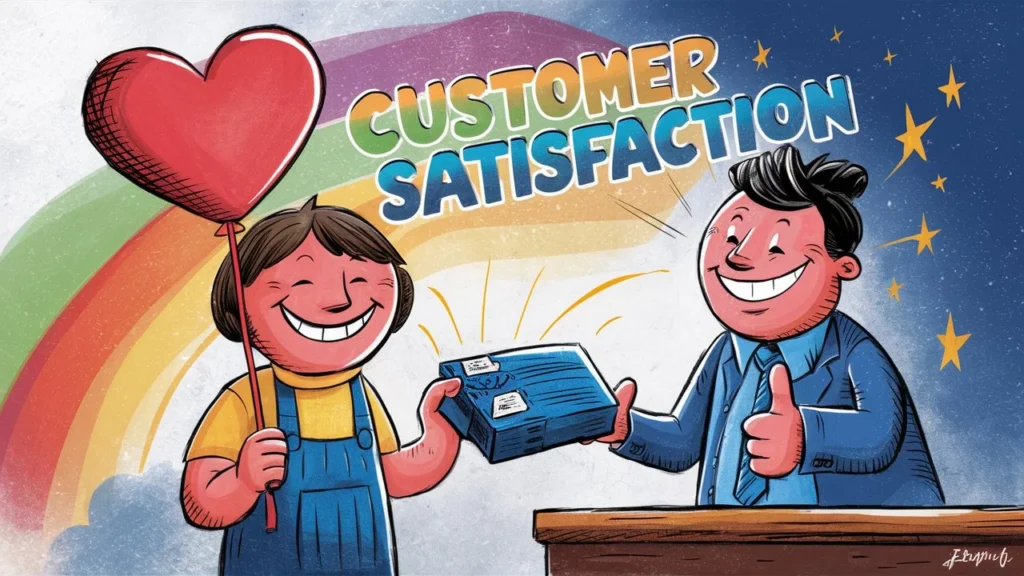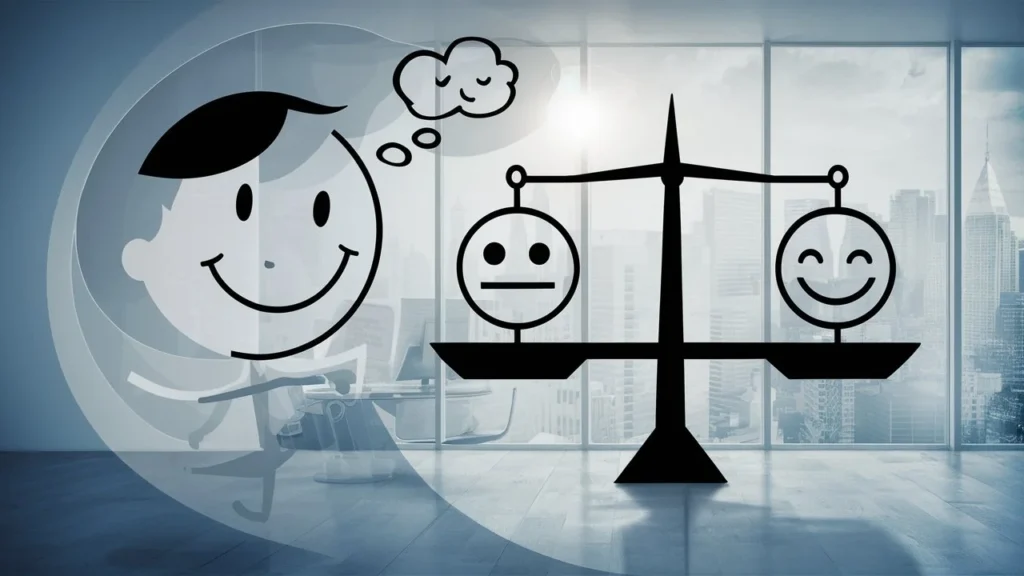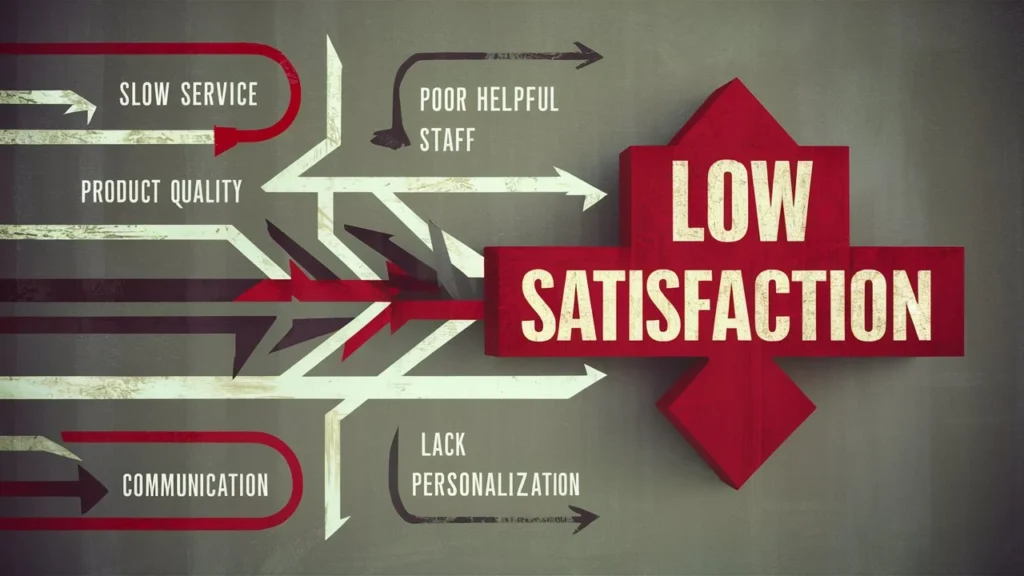How to Improve Customer Satisfaction

Stats say that 83% of customers stick with brands that give best customer service.
Customer satisfaction is the key to a thriving business. It’s all about how happy your customers are with your products, services, and interactions with your company. Building strong customer satisfaction and relationships goes beyond just CSAT scores.
Let’s learn how to “improve customer satisfaction” through a powerful strategy to connect with your customers and drive loyalty.
Your most unhappy customers are your greatest source of learning.
Bill Gates, philanthropist and Founder of Microsoft
In this Post, We’ll Cover:
- What is customer satisfaction?
- Why Customer Satisfaction Matters?
- How to Measure Customer Satisfaction?
- How to Improve Customer Satisfaction? 7 Actionable Tips
- What causes low customer satisfaction?
What is customer satisfaction?
Customer satisfaction is basically how happy your customers are with your product or service. It’s like a happiness meter for your customers. If they’re stoked about what they bought, then your customer satisfaction is high. But if they’re feeling bummed or ripped off, then your customer satisfaction is low.
Think of it this way: Your customers are like your guests. If they have a great time at your party, they’ll want to come back. But if they feel like they’re sitting at the kids’ table, they’re probably not going to invite themselves back.
High customer satisfaction is important for businesses because it leads to:
- Increased customer loyalty and repeat business
- Positive word-of-mouth marketing and referrals
- Improved customer lifetime value
- A competitive advantage
Also, Read:
Why Customer Satisfaction Matters?

Customer satisfaction is like the golden ticket to business success. It’s not just about making your customers happy, it’s about building a solid foundation for your entire company.
Imagine this: You’ve just opened a new restaurant. People love your food, but they also love the atmosphere, the friendly service, and the overall experience. These satisfied customers become your biggest fans, spreading the word to their friends and family. That’s the power of customer satisfaction.
Here’s why it’s a big deal:
- Repeat Business: Happy customers are like your personal cheerleaders, always rooting for your team. They’re more likely to come back for seconds, and maybe even thirds. It’s like having a built-in fan club without the weird merchandise.
- Positive Word-of-Mouth: Stoked customers are like walking billboards, spreading the good word about your awesome products or services. It’s like having a free PR team that’s way more effective than any paid ad.
- Stronger Brand: Satisfied customers build trust and loyalty, making your brand a household name. It’s like becoming the “go-to” for your industry. Think about it: who wouldn’t want to be the first choice?
- Better Insights: Customer feedback is like a treasure map, leading you to hidden opportunities for improvement. It’s like having a secret weapon that your competitors don’t know about.
- Increased Revenue: Satisfied customers are more likely to spend more money and refer their friends. It’s like finding a gold mine right in your own backyard.
Bottom line: Customer satisfaction is the key to long-term success. Keep your customers happy, and watch your business thrive. It’s like winning the lottery, but without the luck.
Also, Read:
How to Measure Customer Satisfaction?

Measuring customer satisfaction is like checking the pulse of your business. It helps you gauge how healthy and thriving it is. Here are a few ways to do it:
Measuring customer satisfaction is like checking the pulse of your business. It helps you gauge how healthy and thriving it is. Here are a few ways to do it:
- Surveys: Send out surveys to get direct feedback on your products, services, and customer experience. Keep it short and sweet, or people will tune out faster than a commercial break. For example, you could ask questions like, “How satisfied were you with our customer service?” or “Would you recommend our product to a friend?”
- Social Media Monitoring: Keep an eye on what people are saying about your brand on social media. You might be surprised by what you find. Sometimes, people are more honest online than they are in person. For example, you could use tools like Hootsuite or Buffer to track mentions of your brand.
- Customer Support Interactions: Analyze customer support interactions to identify common pain points and areas for improvement. It’s like detective work, but instead of solving crimes, you’re solving customer problems. For example, you could review customer support tickets to see what issues are being raised most frequently.
- Net Promoter Score (NPS): Ask customers how likely they are to recommend your business on a scale of 0 to 10. It’s like a popularity contest, but for your business. For example, you could send out a survey with the question, “How likely are you to recommend our company to a friend or colleague?”
- Customer Loyalty Programs: Track customer loyalty and engagement through your loyalty programs. It’s like keeping tabs on your most dedicated fans. For example, you could analyze data from your loyalty program to see which customers are most active and engaged.
Remember, the key is to listen to your customers and use their feedback to make your business better. It’s like winning the game by knowing your opponent’s playbook.
Also, Read:
How to Improve Customer Satisfaction? 7 Actionable Tips
Improving customer satisfaction is like building a strong foundation for your business. Here are some tips and tricks to help you achieve that:
1. Listen Actively
- Pay attention: Really listen to what your customers are saying.
- Ask questions: Encourage feedback and ask open-ended questions.
- Empathize: Show that you understand their perspective.
2. Exceed Expectations
- Go the extra mile: Offer more than what’s expected.
- Personalize: Tailor your service to individual needs.
- Surprise and delight: Offer unexpected perks or benefits.
3. Address Issues Promptly
- Respond quickly: Acknowledge and address complaints promptly.
- Apologize sincerely: Take responsibility and offer a genuine apology.
- Make amends: Compensate for any inconvenience or loss.
4. Empower Your Employees
- Train them well: Provide comprehensive training on customer service.
- Give them authority: Empower employees to make decisions and solve problems.
- Recognize their efforts: Reward and acknowledge excellent customer service.
5. Continuously Improve
- Gather feedback: Collect customer feedback regularly using FREE Survey Maker and other online tools.
- Analyze data: Use data to identify trends and areas for improvement.
- Make changes: Implement changes based on customer insights.
6. Be Transparent and Honest
- Communicate clearly: Be upfront about expectations, limitations, and potential issues.
- Be honest: Admit mistakes and take responsibility for them.
- Build trust: Demonstrate integrity and reliability.
7. Create a Positive Customer Experience
- Make it easy: Simplify processes and make it easy for customers to do business with you.
- Provide value: Offer products or services that meet customers’ needs and exceed expectations.
- Create a memorable experience: Make interactions enjoyable and memorable.
Also, Read:
What causes low customer satisfaction?

Satisfaction can dip for many reasons. It’s often due to a gap between what customers expect and what they experience.
Here are some common culprits:
Product or Service Issues:
- Poor Quality: Defective products break easily. They also don’t perform as advertised. They will disappoint customers.
- Doesn’t Meet Needs: If a product or service fails to meet a customer’s needs or solve their problem, it frustrates them.
Customer Service Shortcomings:
- Long Wait Times: Being kept on hold or waiting for a long time for assistance is a major pain for customers.
- Unhelpful or Unknowledgeable Staff: Customer service representatives are rude or dismissive. They also lack the knowledge to solve problems well. This creates a bad experience.
- Inefficient Processes: Complex or cumbersome procedures for returns, exchanges, or troubleshooting can cause frustration.
Communication Breakdowns:
- Mixed Messages: Different messages in marketing, sales, and customer service confuse customers. They create false expectations.
- Lack of Transparency: If customers are left in the dark about issues or delays, it can erode trust and satisfaction.
- Unresponsive to Feedback: Ignoring customer complaints or failing to acknowledge feedback shows a lack of concern. It can damage relationships.
Other Factors:
- Pricing Concerns: Customers feel they’re overcharged. It can lead to dissatisfaction.
- Unexpected Changes: Sudden price hikes, policy changes, or feature removals can upset customers. This is especially true if they are introduced without proper communication.
- Competitor Advantage: Better products, services, or experiences from competitors can steal customer satisfaction and loyalty.
By pinpointing the root causes of dissatisfaction, businesses can address them strategically. This might mean improving product quality. It could involve better customer service training, simpler processes, or clearer communication.
The goal is to match customer expectations with their experience. This ensures customers feel valued throughout their journey.
Level Up Your Research
Dive deeper than ever before and find the information you need to succeed
Frequently Asked Questions (FAQs):
What is customer satisfaction and why is it important?
Customer satisfaction measures how happy customers are with a company’s products, services, and interactions. It’s a crucial part. It affects a business’s bottom line. It does this by boosting customer loyalty repeat business, positive word-of-mouth, and competitive advantage.
How can a business measure customer satisfaction?
There are several methods to measure customer satisfaction. It includes customer satisfaction surveys (CSAT) and Net Promoter Score (NPS). Also, customer effort score (CES), customer retention rate, and customer lifetime value (CLV). Plus, social media listening and online review analysis.
What are some of the benefits of high customer satisfaction?
High customer satisfaction leads to more customer loyalty and, also leads to repeat business. It includes free marketing through positive word-of-mouth and better customer lifetime value. It gives a competitive edge in the marketplace.
What are some tips for crafting effective customer satisfaction surveys?
- Ask specific questions tailored to the customer journey touchpoint.
- Keep it short and sweet with clear, concise questions.
- Use multiple-choice and Likert scales for easy response and analysis.
- Consider offering incentives for participation, especially for longer surveys.
How can businesses target the right audience for their surveys?
Surveys should target customers. They should have recently interacted with the brand at a specific touchpoint.
What are some best practices for distributing customer satisfaction surveys?
- Choose the right channel (email, website, SMS) based on the situation.
- Distribute surveys soon after a customer interaction for a fresh memory.
How should businesses analyze and respond to customer survey feedback?
- Identify trends and areas for improvement.
- Acknowledge both positive and negative feedback.
- Take action based on the feedback to improve products, services, or customer service.
What are some common causes of low customer satisfaction with products or services?
- Poor product quality or products not meeting customer needs.
- Long wait times, unhelpful customer service representatives, or inefficient customer service processes.
- Mixed messages, lack of transparency, or being unresponsive to customer feedback.
How can businesses improve customer satisfaction through better customer service?
- Enhance customer service training to improve response time, knowledge, and helpfulness.
- Streamline processes for returns, exchanges, or troubleshooting to reduce customer frustration.
What are some ways to avoid communication breakdowns that can lead to customer dissatisfaction?
- Ensure consistent messaging across marketing, sales, and customer service.
- Maintain transparency with customers about issues or delays.
- Be responsive to customer inquiries and feedback.
How can businesses address pricing concerns and keep customers satisfied?
- Communicate the value proposition behind product or service pricing.
- Offer fair pricing that reflects the quality and benefits provided.
- Consider flexible pricing options or loyalty programs to enhance value for customers.
How does customer satisfaction relate to customer loyalty and repeat business?
Satisfied customers are more inclined to come back for more purchases, resulting in greater customer loyalty and recurrent business.
What is the role of word-of-mouth marketing in customer satisfaction and loyalty?
Happy customers spread the word. They give positive recommendations to friends, family, and online. This creates free marketing and boosts customer loyalty.
How can businesses leverage customer satisfaction to gain a competitive advantage?
By making customer satisfaction a priority, businesses can build stronger customer relationships. They can also build loyalty. They can stand out from competitors with less satisfied customers.
How can businesses leverage customer satisfaction to gain a competitive advantage?
By making customer satisfaction a priority, businesses can build stronger customer relationships. They can also build loyalty. They can stand out from competitors with less satisfied customers.
What are some strategies for building strong customer relationships and fostering loyalty?
- Listen to customers and act on their feedback to solve any issues.
- Personalize the customer experience whenever possible.
- Use loyalty programs or reward systems to encourage customers to come back.
- Proactively engage with customers and provide excellent service throughout their journey.
Conclusion
Customer satisfaction is a key metric for businesses. It shows how well they meet customer expectations. Businesses can measure satisfaction. They can find ways to improve. Doing this helps them build better customer relationships. They do this by addressing concerns. This also fosters loyalty and leads to long-term success. Remember, happy customers are the foundation of a thriving business.





